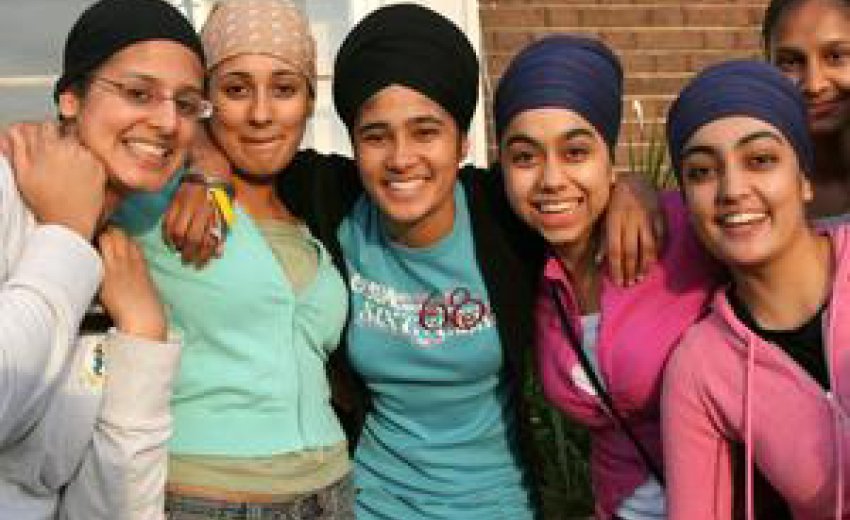
While many Americans might recognize the turban worn by Sikhs, few seem to be familiar with the faith itself.
"They've heard of Hinduism, they've heard of Islam, but they've never really hear of Sikhism," said Sandeep "Sunny" Atwal, 18, a Ben Davis senior and a practitioner of the Sikh faith.
Sikhism is the fifth-largest religion in the world, with more than 26 million Sikhs worldwide -- 1 million in the United States and Canada. About 2,000 Sikh families live in the Indianapolis area, many in Greenwood. Most came in the past decade and are served by five gurdwaras, or temples.
Sikhism, founded in India in the 15th century by Guru Nanak, follows his teachings and those of nine subsequent gurus. Among its core principles is the belief in one God, who is the same for all people of all religions. It also recognizes all people as equals.
"We believe that there is God inside of everyone," explained Simrat Oberai, 12, Zionsville.
"It's a religion that doesn't judge other religions," Sunny said.
Five symbols of Sikhism set it apart from other faiths:
Kara -- a bangle, usually made of iron or steel and worn on the right wrist -- is the foremost symbol worn by all Sikhs. It symbolizes strength, and the circular shape is a symbol of the eternal God and the unity of Sikhs and God.
Kesh is uncut hair. Traditionally, Sikhs do not cut their hair, and Sikh men do not cut their beards. The long hair is usually wrapped in a turban.
Kangha, a wooden comb used to keep hair clean and tidy. It is usually tucked under the back of the turban.
Kachera is specially made cotton underwear, which serves as a reminder of the commitment to purity.
Kirpan is the sword, with which the pure defend the fine line of truth.
Another vital part of Sikhism is prayer. On Sundays, Sikhs gather at the gurdwara for worship and fellowship. They remove their shoes and settle in for an all-day event, with breakfast and lunch and a service in between.
Chanting is the main form of Sikh prayer. They have many simple chants, many in Punjabi, and many use them throughout the day.
"Something was happening at school, I kind of got a little upset, and I just started chanting a little bit and it calmed me down," Sunny said.
"The cultural values, the background we have, it's really amazing," said Deepika Verma, 19, of Indianapolis
Sikh youth often find that many of their friends are not familiar with Sikh traditions or values; some have not even heard of the religion despite the efforts of many schools to introduce students to the many religions in the world.
"I know, in middle school, we learned about Christianity, Judaism, Buddhism and Hinduism and all that, but we never once talked about Sikhism until freshman year," Sunny said.
This lack of familiarity with Sikhism can cause problems for young Sikhs. Most of them do not display all of the symbols all of the time, but they often have to explain the ones they do wear every day, usually the kesh and kara.
"Our turban, most people consider that something to do with terrorism," said Darsh Singh, 16, Indianapolis.
Sunny recalled a troubling incident when he was in middle school. "One person actually went so far to insult one of the five K's by actually taking it off of me. But I confronted the principal about it, and he told me that as soon as he found out who it was, he'd do something about it. But the guy ended up getting kicked out for some other reason, so it didn't matter."
Sikh children enjoy many of the same activities as other students, such as listening to music, going to movies and playing sports. But they avoid Western activities such as parties where people might get drunk or act lewd.
"Our religion restricts us from drinking, and there's a lot of drinking in high school, though there's not supposed to be," said Darsh.
Dating is also different with Sikh youth. While most have friends who come from a variety of backgrounds, families like to keep a closer eye on potential suitors. The scrutiny is stronger for girls, which makes dating difficult. Arranged marriages are rare, but most of the youth said their parents prefer marriage to a Sikh or a family friend.
Though many Sikh teens feel pressure to conform to Western values, they are finding the strength to follow the traditions of their religion.
Sunny, who cut his hair for personal reasons, maintains fidelity to Sikhism.
"Growing up, my beliefs were definitely influenced by my parents, but as I've gotten older . . . I no longer accept Sikhism because my parents accept it. I accept Sikhism because it's what I believe to be right."
Reporters Colleen Maynard, 11, and Anna Puderbaugh, 10, contributed to this story.

